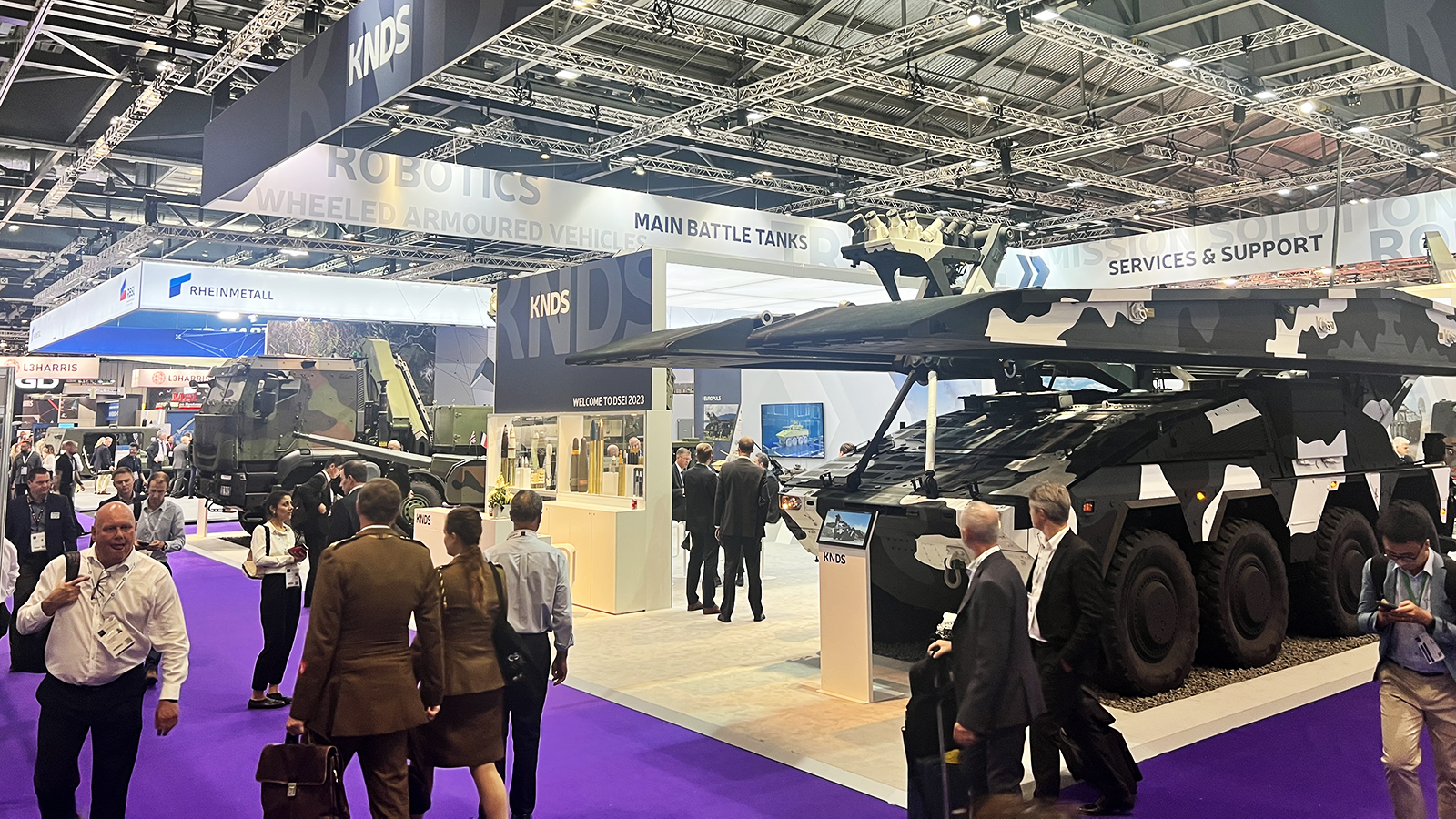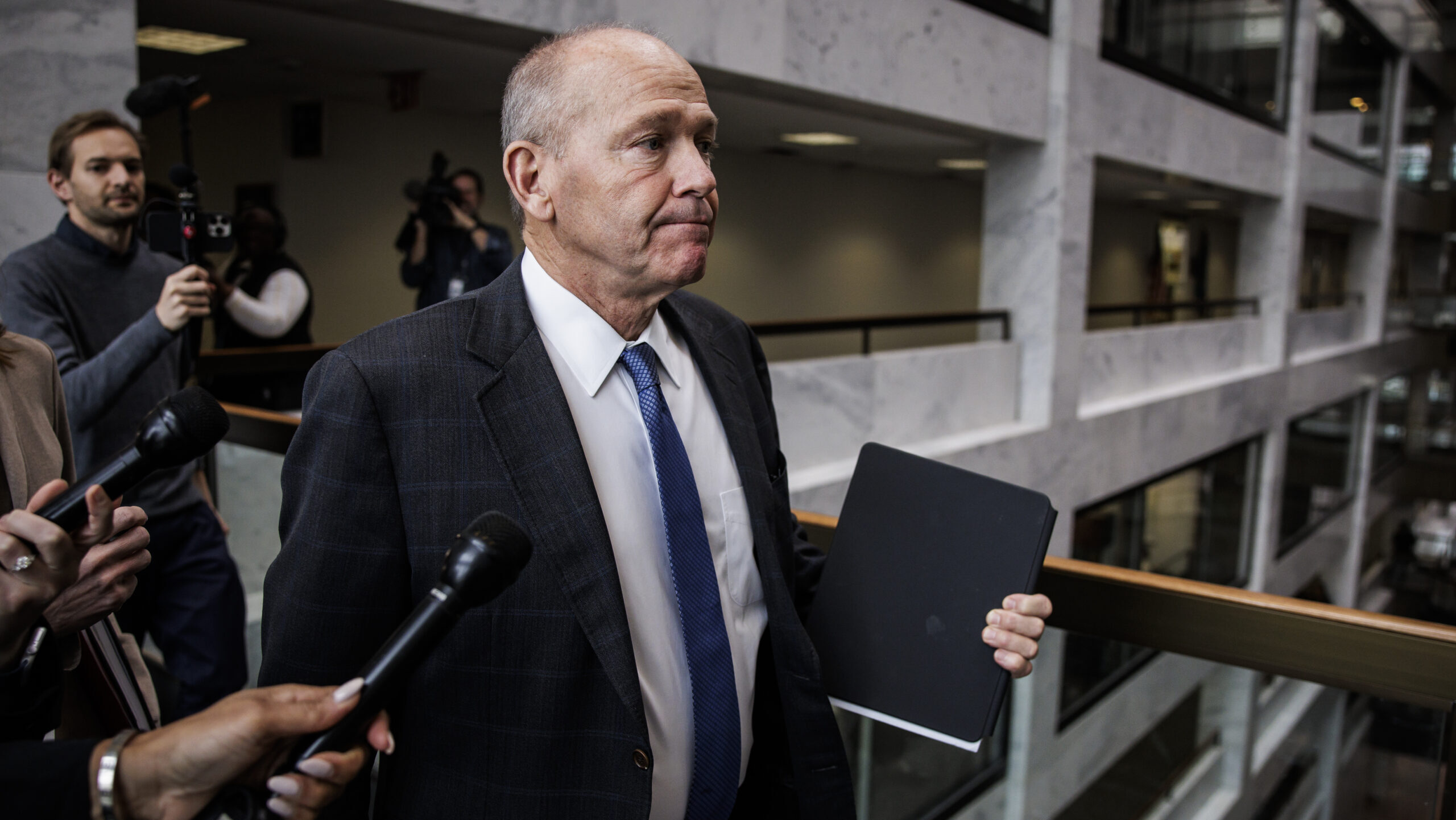
The crowded and endless show floor at DSEI 2023 in London. (Lee Ferran / Breaking Defense)
DSEI 2023 — This year’s Defence Security and Equipment International, known by the acronym DSEI, is done and dusted, as they say.
While one Breaking Defense team was back in Washington covering the AFA Air, Space and Cyber conference, another team was on the ground in London for DSEI, including European Bureau Chief Tim Martin, normally based in Belfast, and naval warfare reporter Justin Katz, normally based in Washington. Coming together from an ocean away, here’s what caught their combined transatlantic eye.
FULL COVERAGE: DSEI 2023 in London
Justin: Tim, DSEI 2023 here in London is done and it’s been a whirlwind. Plenty of representation both by governments and industry from the United Kingdom and its allies, no lack of cool tech on display on the show floor and the DLR* wasn’t too jam packed.
That aside, let’s get into it. As a naval reporter, I think my highlight was a speech by Adm. Ben Key, the first sea lord. He discussed Ukraine’s strikes on Sevastapol earlier this week as well as the prominence and import of unmanned and autonomous technologies. I’ve been keeping a close eye on how naval warfare is, or isn’t, playing a part in the war in Ukraine, and I’m certainly not the only one.
Unmanned tech is also becoming more prominent in the US Navy, as well, and I’m curious how much of that interest is mirrored here in Europe.
What’s been a highlight for you?
Tim: Certainly UK interest in uncrewed naval based systems is showing signs of progress, with Leonardo announcing at the show a concept design of a two- to three-ton Proteus UAS helicopter demonstrator that is a key component of the UK Ministry of Defence Rotary Wing Strategy. A not-to-scale model of the prototype was on display here, but the final design will be dependent on additional investigation into “potential systems” that could be integrated at a later date.
In terms of highlights, I was able to sit down for a one-on-one with Micael Johansson, Saab CEO. He discussed the need for Sweden to add more money to future fighter technology studies so Saab can look to get started on test and simulation activities. He also said he wanted to see “clearer objectives” from NATO and governments across Europe to support increased weapons production, vital for the rebuilding of stockpiles and supplies to Ukraine. I would certainly encourage readers to take a look at the full story.
And while Saab might be a big player in European industry, I understand some major US firms were here as well.
Justin: Definitely. For instance, Northrop Grumman was out in force this week demonstrating their integrated air and missile defense battle command system, nicknamed IBCS, to European militaries. This system is already in use by the US Army and is making its way into Poland’s military, but Northrop is hoping they can convince more of America’s allies and partners to get onboard. Company officials said they conducted a classified demonstration for several allies and partners earlier this summer in Germany. Whether the company succeeds in that pitch will certainly be something for us to keep an eye on moving forward.
We’ve been hearing a lot of talk these past few months about the Global Combat Air Program and some controversy over Saudi Arabia’s potential entry. Can you fill me in on GCAP, and what did we learn about it during the show?
Tim: This one is very much a case of “will they or wont they?” and at the moment we still have some uncertainty. Long story short: Saudi Arabia reportedly made a request last month to join GCAP, which is a three-nation, sixth-generation fighter jet program, featuring the UK, Italy and Japan. But as I was told by Richard Berthon, director of UK future combat air, there is not a “definitive” timeline for Saudi to join. What matters at the moment is a “feasibility study” which is planned to wrap up in Q1 2024, which will help the UK and Saudi Arabia reach a “maturity of understanding” as Berthon put it.
This issue is hardly likely to be solved any time soon, as the other GCAP partners, Italy and Japan, also have a say in Saudi’s potential involvement. And although the Kingdom can of course offer exceptional financial resources, there is certainly a huge question mark over whether they can make a meaningful industrial contribution as manufacturers continue to define the design of a core vehicle eventually due in service in 2035.
Justin: Speaking of next generation vehicles, BAE Systems had an Armored Multi-Purpose Vehicle, made for the US Army, on the show floor.
Company officials said they’ll be doing a demonstration for the Army later this year where they’ll retrofit a 30mm turret to a general purpose variant AMPV, making it suitable for countering unmanned aerial drones. The Pentagon in recent years has spoken a lot about the c-UAS mission and it seems industry has listened. This isn’t the first ground vehicle BAE has outfitted with a turret for that purpose.
BAE also gave me a tour inside one of their Amphibious Combat Vehicles. The one on the show floor is the personnel variant, which can accommodate 13 Marines as well as a driver, commander and gunner. Not quite the same as being in the water, but a tour on land is the next best thing.
I think that hits on the high points of the show for us, Tim. Any suggestions for a good pub to visit before I return to Washington?
Tim: Yeah, cheers, Justin, let’s go. You see the problem with Guinness in London is…
*The DLR is the train the team to took get to and from the show, and to several other stops by accident.












